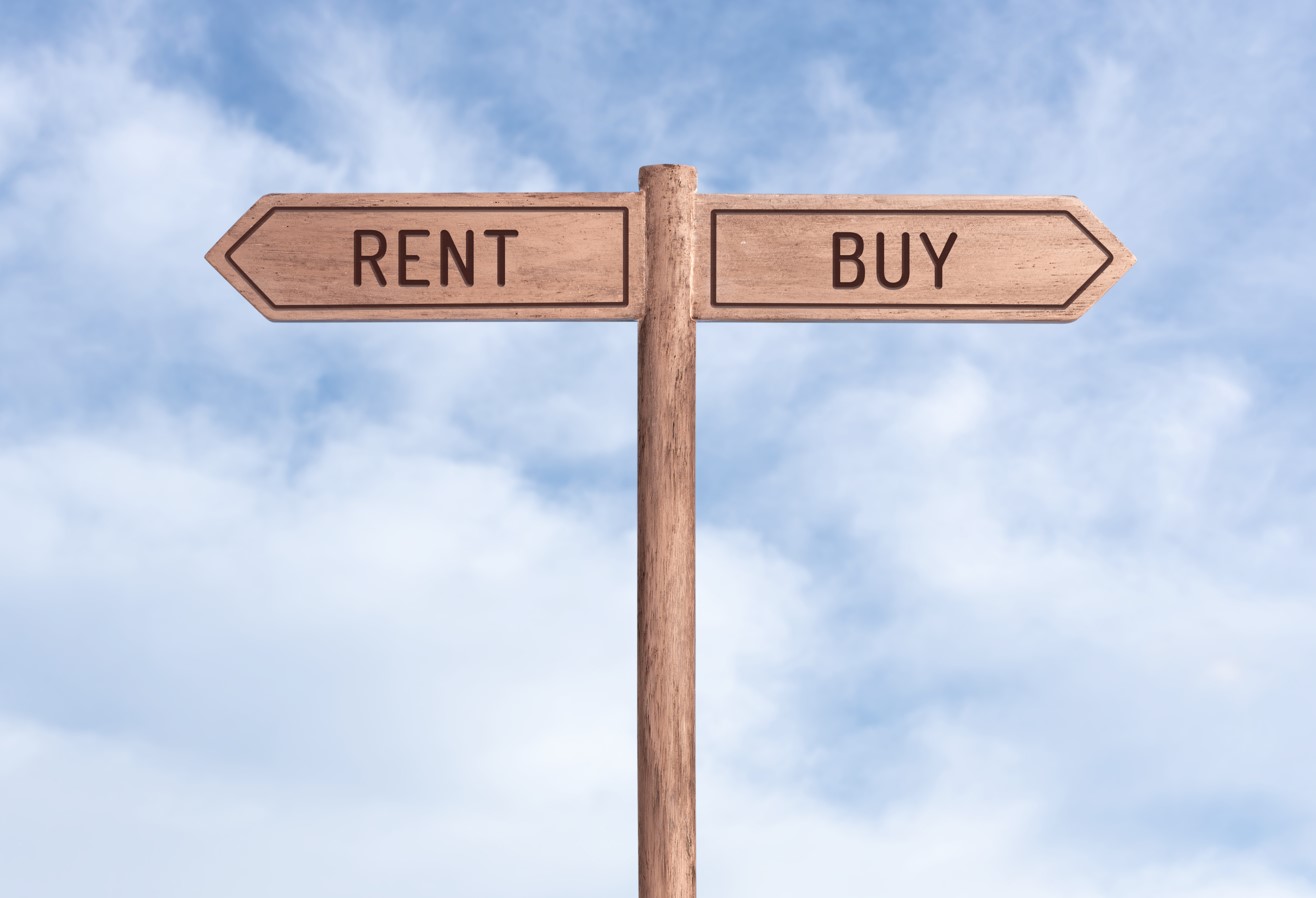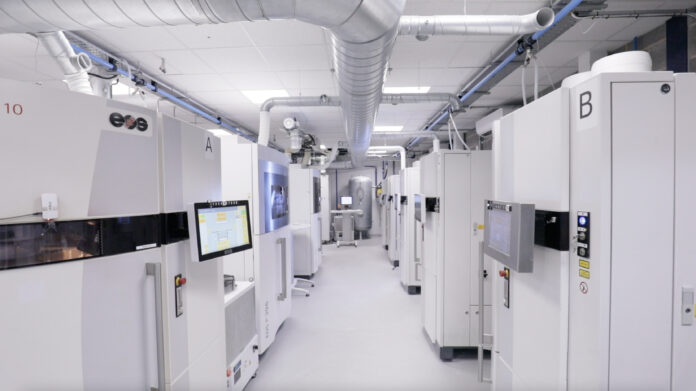“I know we need an industrial 3D printer but I am not sure if we will be able to amortize the cost of such an investment in our company. Any idea where I should start looking?” an engineer new to the industry once asked me.
Once you know Additive Manufacturing is the right path for you, the next step can be quite intimidating. What’s most intimidating here is the cost consideration that appears at many levels of the decision-making process.
Back then, I didn’t know exactly what I could tell this engineer. After thorough reflection – and obviously, after many discussions with different machine manufacturers, I should have told him to weigh the pros and cons of each acquisition model. At that specific time, for their specific needs, buying was probably not the ideal option.
One of the most common assumptions we make in manufacturing is that we should buy our own AM machine. This is not a bad assumption in itself but when you start thinking about the manufacturing area, the number of operators you would need to operate the machine, the maintenance, and other related equipment (materials, post-processing, software, etc.) needed in your manufacturing value chain, that need can easily become a utopian dream – especially if your company does not have an unlimited budget at hand.
In such cases, it could be smart to explore subscription as well as leasing or renting options.
What does each option consist in?
If you’ve ever leased a car, then you should already know the leasing model: you pay a fixed amount per month for a specific term. At the end of the agreed period, you can either return the equipment or buy it for a lower price.
In the AM industry, companies like NCP Leasing based in the U.S., specialize in purchasing AM equipment from manufacturers to lease them to those who do not have the same financial flexibility as those who can purchase directly their 3D printer. NCP Leasing has already worked with the likes of ExOne, Renishaw, Stratasys, and 3D Systems in this regard.
That being said, it is also possible to lease or rent a 3D printer from a distributor. UK-based distributors Tri-Tech 3D and Additive-X (formerly GoPrint 3D) offer direct rental contracts on a wide range of 3D printers including filament, resin, (and metal 3D printing technologies – in the case of Tri-Tech 3D). Short-term rentals can even be explored for one-off projects or events.
In a subscription model, on the other hand, the equipment remains the property of the vendor. However, you pay for more than just a 3D printer; you pay for a wide range of services that will enable you to operate your machine successfully. Apart from Carbon which has made this option a part of its business model from the beginning (with pricing starting at $20,000), the subscription model is quite common in the software business (Markforged and EOS for instance provide subscription-based plans for their software platform).
Since the Covid-19 pandemic, other machine manufacturers such as HP & Desktop Metal have started integrating a subscription-based plan in the way they provide their services.
“Rent and subscription models can be an appealing way to acquire exclusive access to a 3D printer with reduced risk through low or no initial capital expenditure. Renting may be the most flexible, but of course, this comes at a higher price over the long term. Subscription models can often be extremely competitive, however many are based on a minimum threshold of throughput that may be hard to guarantee without an established market. Purchasing a machine can be a daunting prospect, however, in the long term this can offer the most flexibility to the purchaser. A salient point is that the correct acquisition model for a user will often be determined situationally depending on their circumstances and potential markets,” Tom Cornthwaite, from DiManEx, told 3D ADEPT Media. DiManEx provides a platform that converts traditional, physical supply chains into future proof, digital supply chains.
Purchase is quite simple to understand as you invest money in a device that you own completely. What should absolutely need to be assessed here is the set of factors that could amortize the cost of the 3D printer into the projected cost per part, before you decide to order the machine.
To this, Cornthwaite replies: “whilst amortizing capital costs through increased part prices is common in other manufacturing methods, care needs to be taken in doing so for 3D printed parts. Amortization is straightforward if there is a high demand for very similar parts, however, this is unlikely to be the case when utilizing the flexibility afforded by 3D printing! Overall, one needs to establish a part cost model that takes into account machine costs and depreciation whilst allowing flexibility to cope with demand and potential failures that can occur more often when applying 3D printing to new applications.”
“Our foremost consideration is the quality of the part, prioritizing it over the cost of the machine. As a 3D printing bureau, our commitment is to provide the highest standard of parts using cutting-edge AM technology, irrespective of the financial outlay. Additional factors such as material performance and repeatability are crucial, ensuring our clients can rely on consistent results time and time again,” Nick Allen, CEO at 3DPRINTUK states. 3DPRINTUK is a 3D printing service provider that prefers to purchase all their machines. “Over the past decade, we consistently observed that investing in top-quality equipment has consistently proven to be a wise decision, yielding long-term benefits. Achieving a near injection-moulded finish with Additive Manufacturing (AM) requires not only the right printer but also substantial upfront investment in finishing equipment. Often, the combined cost of the finishing equipment is 2 to 3 times that of the 3D printer itself, a crucial factor not always immediately apparent,” Allen adds.

The table below presents a short overview of the main acquisition models and when it could be interesting to consider each of them. Needless to say that each of these items depends on the contract you have with each vendor or distributor.
| When should you consider it? | Other points to take into account | |
| Purchase | – Length of use: If you intend to use the printer extensively (for example for product design and long manufacturing roadmap), buying it is likely more cost-effective over time. However, if you only need it for a specific project or prefer frequent technology upgrades, renting might be a better choice. This means you already know your business case.
– You own your equipment and can do whatever you want with it: you can expand your reach, and educate yourself within a timeframe that is yours. – When time and labor costs are NOT a factor
|
– Gradually becomes obsolete after the purchase |
| Lease or rent | – Because renting is considered an expense rather than a capital investment, the approval process in your organization may be more straightforward.
– Possibility to own the machine after the rental term – depending on your contract. – Rent payments are usually tax-deductible when they are made for business purposes – so no need to carry the 3D printer as a depreciating asset on your balance sheet. |
– It is “another monthly fee” to add to other things you’re already paying for |
| Subscription-based models | – Shift costs from CAPEX to OPEX
– Continual platform improvement: you benefit from the latest technology updates when they are available. – Flexibility: you can stop the plan when you want |
– You never own the machine |
If you’re an AM beginner whose business case is not clear yet, I would recommend following DiManEx advice:
“Working with an experienced AM partner in the first instance is a great way to de-risk the process of developing and manufacturing parts for 3D printing. By letting an experienced partner guide the process, a lot of information can be gleaned about the most suitable machines, materials and even design for 3D printing, without the commitment and cost of acquiring a machine in the first instance. This can give the end user an opportunity to prove and grow their demand sufficiently to then potentially consider acquisition of their own machine to improve their costs further. It also gives an opportunity for a business to adapt their systems and processes to working with 3D printing as opposed to traditional methods. Quality systems and process flows may need alteration which can take time!”
In the end, whether you purchase, lease, rent or subscribe to a plan, you should keep in mind that there is no right or wrong answer, there is just one that works for your project or not.
This dossier has first been published in the 2024 November/December edition of 3D ADEPT Mag.
Remember, you can post job opportunities in the AM Industry on 3D ADEPT Media for free or look for a job via our job board. Make sure to follow us on our social networks and subscribe to our weekly newsletter: Facebook, Twitter, LinkedIn & Instagram ! If you want to be featured in the next issue of our digital magazine or if you hear a story that needs to be heard, make sure you send it to contact@3dadept.com






